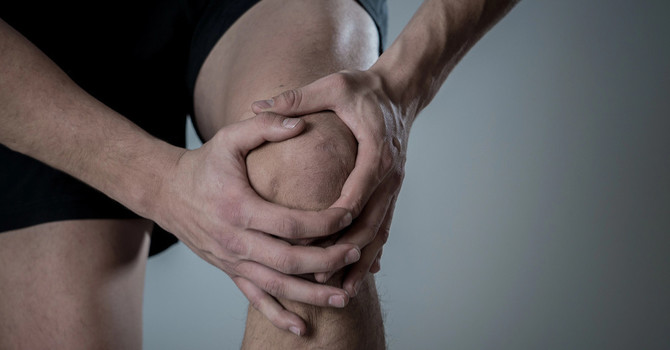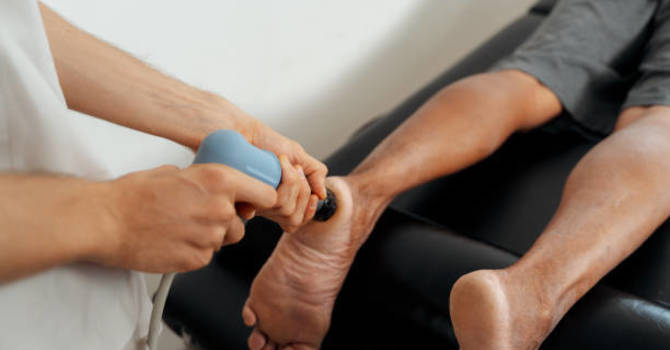%20copy%203.png)
Everyone's life has been changed in the last few months.
- Have you been working remotely?
- How is your desk setup up?
- Or maybe you're not walking to the printer or water fountain as far because you're in your house! Have you noticed wrist pain?
- Hand pain?
- Maybe you’ve felt this condition while sitting at the computer typing out work assessments, during a long session of playing video games, or swiping left or right on a phone or tablet screen repeatedly.
- Perhaps you lift weights and experience it in the middle of an intense workout. or while holding heavy construction tools.
Whatever the cause may be, whether it’s from typing for long periods of time, holding a phone for a long time, or holding a jackhammer, the immediate conclusion people think of it as a condition known as Carpal Tunnel Syndrome.
But what is this condition or this syndrome specifically? Is all wrist pain automatically carpal tunnel syndrome, or is it possibly something else? Check out the video down below, some stretches that may affect your symptoms!
Carpal tunnel syndrome (CTS) is an entrapment neuropathy. (1) The easiest way to think about this is to think of a hose flowing with water, if you step on it you the flow of water changes. That same concept is applied to the body in this case, you can visualize a similar compression of the nerve as it travels down through the wrist and into the hand. The nerve, in particular, known as the median nerve, travels through a bony area in the wrist called – you guessed it – the carpal tunnel.
The carpal tunnel itself is a narrow passageway inside your wrist surrounded by bones and ligaments. Compression, or pinching, of the median nerve, can create symptoms including numbness, tingling, and weakness in the hand, wrist, and arm.(2)
Carpal tunnel is the most common of neuropathies, or nerve conditions, with over 90% of neuropathic cases being from carpal tunnel compression. (1) We venture to think almost all adults have met someone who has had carpal tunnel syndrome.
Carpal tunnel can be caused by a variety of circumstances and conditions as well. CTS is more likely to occur in people who hold vibrating tools or work in an assembly line, engage in work that requires repetitive flexing of the wrist such as typing, take certain medications, have inflammatory conditions, or have poor wrist and hand ergonomics. (2)
The most common causes of carpal tunnel syndrome include genetic predisposition, history of repetitive wrist movements such as typing, or machine work as well as obesity, autoimmune disorders such as rheumatoid arthritis, and pregnancy. (1) However, repetitive motions are a high-risk factor in developing carpal tunnel symptoms due to the repetitive activities inflaming the tendons that run through the carpal tunnel. This inflammation can lead to compression of the median nerve. (3)
Symptoms usually start gradually, in one or both hands during the night, with frequent numbness or tingling in the fingers. (4) Some people report their hands and fingers even feel useless, clumsy, and unresponsive or even feel swollen, although little or no swelling is apparent! If the nerve is compromised, this inhibits the brain from communicating to the structures the nerve services, and vice versa, the brain cannot hear what the body parts are feeling or experiencing!
Unfortunately, many cases of the wrist and forearm pain are automatically diagnosed as CTS without truly examining all possible causes of the pain, or even confirming if the painful condition is truly CTS.
The million-dollar question: Is every hand and wrist issue created by an issue with the nerve inside the carpal tunnel? The short answer: no! Overused muscles (and other soft tissues) change in three important ways:
- Acute conditions (pulls, tears, collisions, etc)
- Accumulation of small tears (micro-trauma)
- Not getting enough oxygen (hypoxia)
Each of these factors can cause your body to produce tough, dense scar tissue in the affected area. This scar tissue binds up and ties down tissues that need to move freely. As scar tissue builds up, muscles become shorter and weaker, the tension on tendons causes tendonitis, and nerves can become trapped. This can cause reduced range of motion, loss of strength, and pain. If a nerve is trapped you may also feel tingling, numbness, and weakness. (6) We use Active Release Technique, among other ways, to get rid of this scar tissue associated with overuse injuries all over the body.
Another condition, called Pronator Teres Syndrome (PTS), is very similar to CTS in the way it manifests. PTS causes similar sensations to carpal tunnel syndrome, including weakness, tingling, pain, and numbness.
However, Pronator Teres Syndrome is caused by a muscle in the forearm – it has nothing to do with the carpal tunnel in the wrist and hand!
Pronator Teres Syndrome describes a condition where the median nerve is also compressed, but the cause is distinctly muscular. (5) The Pronator Teres muscle in the forearm becomes overused with the excessive repetitive motions involved in our usual activities of daily living. Maybe the repetitive motion is from an aspiring college golf or tennis player perfecting her swing daily or someone who works in a kitchen, ladling soup, and washing dishes. Maybe it’s the guy who wants to Do-It-Yourself a new kitchen in his home, and he’s swinging a hammer to break up old kitchen fixtures. Maybe it is just an average everyday Joe or Jane who has a new project at home or work and is moving differently and begins to notice pain. Whatever the repetitive cause, the same motions cause scar tissue, adhesions, or muscular restrictions to set up housekeeping inside the muscle and entrap the Median Nerve, causing forearm, wrist, and hand symptoms – much like CTS.
Both syndromes cause similar pain but must be treated differently to achieve the desired results. Imagine being treated for one condition with no change in pain and no results – when you actually have the other and need a different treatment altogether! Talk about frustrating!
So here's the good stuff, what can you do if you have wrist and hand pain? Your first line of defense is a physical examination of the hands, arms, shoulders, and neck by your trained chiropractic doctor. He or she can help determine if the person’s complaints are related to daily activities, such as overuse or poor ergonomics, or due to an underlying disorder such as carpal tunnel or pronator teres syndrome.
Many cases of carpal tunnel can be treated conservatively or without surgical intervention. Changing your daily routine, chiropractic care, soft tissue work, and other forms of treatment exist that can improve and resolve a painful wrist condition, without surgery!(4)
In the meantime, if you’re suffering from wrist and hand pain and you’re waiting for your next doctor’s appointment, here are some basic, easy stretches you can do on your own. Remember, these are a method of prevention, not treatment for any wrist or forearm condition.
Perform each stretch to tolerance (meaning, don’t hurt yourself!) for two sets, with 15-second holds on each arm. Check out this video for a few stretches!
Did you have fun with those stretches? Did they cause any discomfort, or did it feel good to stretch those hand and forearm muscles?
Keep in mind, there are other conditions that can affect the wrist, forearm, and elbow, and if you are having pain besides carpal tunnel and pronator teres muscles. We only addressed two common causes here. Your local chiropractor is well-versed in extremity conditions that can create discomfort and affect your ability to work and play.
References
1. Sevy, J.O., and Varacallo, M. (2020). Carpal tunnel syndrome. StatPearls [Internet]. StatPearls
Publishing; Treasure Island (FL): Mar.
2. “Carpal tunnel syndrome.” MayoClinic. Retrieved from https://www.mayoclinic.org/diseases-
conditions/carpal-tunnel-syndrome/symptoms-causes/syc-20355603.
3. Mooar PA, et al. Management of Carpal Tunnel Syndrome. J Am Acad Orthop Surg. 2018 Mar
15;26(6):e128-e130.
4. “Carpal Tunnel Syndrome Fact Sheet.” National Institute of Neurological Disorders and Stroke.
Updated April 2020. Retrieved from https://www.ninds.nih.gov/Disorders/Patient-Caregiver-
Education/Fact-Sheets/Carpal-Tunnel-Syndrome-Fact-sheet
5. Dididze, M., Tafti, D., and Sherman, A.I. (2020). Carpal tunnel syndrome. StatPearls [Internet].
StatPearls Publishing; Treasure Island (FL): May.
6. “What is Active Release Techniques®(ART) to Individuals, Athletes, and Patients?” Active Release Technique. Retrieved from http://activerelease.com/ART-for-Patients.asp





